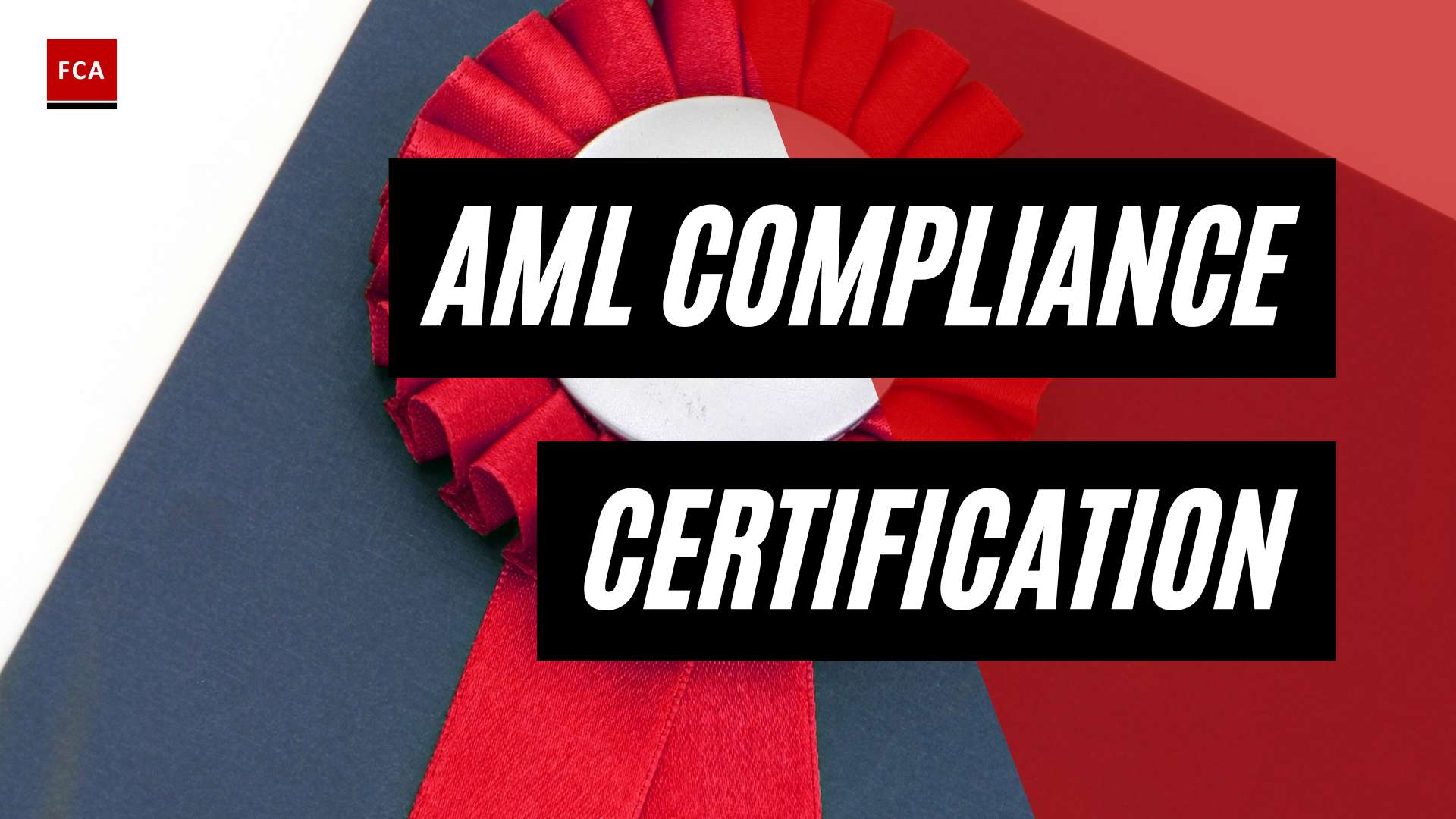Understanding AML Compliance
A deep understanding of Anti-Money Laundering (AML) compliance is fundamental for professionals working in risk management, anti-money laundering, and anti-financial crime. This section will delve into the basics of AML compliance and its importance in the current financial landscape.
Basics of AML Compliance
AML compliance refers to the set of laws, regulations, and procedures designed to prevent criminals from disguising illegally obtained funds as legitimate income. AML compliance programs are a requirement for every reporting entity across different sectors, according to the Proceeds of Crime (Money Laundering) and Terrorist Financing Act (PCMLTFA) regulations (CPA Canada).
The program must include a governance framework, detailed processes, and procedures to report suspicious or prescriptive activity. This aids law enforcement in their duties and includes aspects such as AML transaction monitoring, AML risk assessment, AML due diligence, and the use of AML compliance software. For a comprehensive understanding of these regulations, one can refer to our detailed guide on AML laws and regulations.
Importance of AML Compliance
AML compliance is not merely a legal obligation, but a critical business practice. It helps organizations mitigate the risks associated with money laundering, terrorist financing, and other financial crimes by implementing effective policies and procedures.
Moreover, AML compliance training is crucial for employees to be able to identify red flags for money laundering. Organizations are required to provide ongoing training to stay up-to-date with regulatory changes and money laundering trends.
The training can be delivered through various methods, including in-person training sessions, online courses, workshops, and seminars, ensuring that employees have a solid understanding of AML regulations and requirements. This pertains not just to the law but to the organization’s AML compliance requirements as well.
Implementing a culture of compliance through AML training not only deters illicit activities within the institution but also promotes a strong ethical foundation that aligns with regulatory expectations. A well-trained workforce is a critical component of an effective AML compliance program (Financial Crime Academy).
In essence, understanding AML compliance and its relevance in today’s financial landscape is the first step towards becoming a proficient professional in the field. Therefore, investing in AML compliance training is essential for individuals and organizations alike.
Key Components of AML Compliance
Understanding and implementing the key components of AML (Anti-Money Laundering) compliance is crucial for any reporting entity across various sectors. These components are designed to establish a robust framework for preventing and detecting money laundering, terrorist financing, and other financial crimes. In this section, we will delve into the roles of a Compliance Officer, the importance of establishing policies and procedures, and the necessity of risk assessment in AML compliance.
Role of a Compliance Officer
The first step in establishing an AML/ATF compliance framework is appointing a Compliance Officer. This individual plays a pivotal role in the development and implementation of an AML compliance program. They are responsible for creating and managing policies, procedures, training programs, and necessary tools. The Compliance Officer should have a comprehensive understanding of business operations and should have access to relevant resources within the organization (CPA Canada).
For a comprehensive understanding of the AML compliance requirements, Compliance Officers often partake in professional AML compliance training. This training equips them with the knowledge and skills to effectively implement and manage the AML compliance program within their organization.
Establishing Policies and Procedures
The creation of written policies and procedures is a fundamental step in the AML compliance process. These documents serve as a clear roadmap for meeting obligations, allocating resources appropriately, and addressing the greatest threats. They guide the actions of employees within the organization and ensure adherence to AML laws and regulations (CPA Canada).
Key elements of these policies and procedures may include the detection of suspicious activities, carrying out AML due diligence, implementing a customer identification program, conducting independent audits, and continuous monitoring and testing.
Risk Assessment in AML Compliance
Risk assessment is another vital component of AML compliance. By identifying and prioritizing the risks associated with money laundering and terrorist financing, organizations can allocate resources effectively and focus their efforts on the most significant threats.
The risk assessment process typically encompasses the evaluation of customers, products, services, delivery channels, and geographic locations. The findings of the risk assessment inform the development of the organization’s AML policies and procedures and guide the implementation of control measures.
Organizations should regularly update their risk assessments to reflect changes in their business environment, regulatory landscape, and risk profile. They should also ensure that their employees are trained in AML risk assessment methodologies and understand the role of risk assessment in maintaining AML compliance.
By understanding and implementing these key components of AML compliance, organizations can establish a robust framework for preventing and detecting money laundering, terrorist financing, and other financial crimes. Such a framework not only helps organizations comply with anti-money laundering regulations but also bolsters their reputation for integrity and transparency in the eyes of their customers, partners, and regulators.
Significance of AML Compliance Training
Compliance with anti-money laundering regulations is a vital aspect of a company’s operations, especially for those in the financial industry. AML compliance training plays a crucial role in ensuring that employees are equipped to identify potential red flags for money laundering and adhere to necessary regulatory requirements (Financial Crime Academy).
Role Specific Training
AML compliance training should be tailored to different roles within an organization to address specific job functions where money laundering risks are most prevalent. This approach ensures that employees across various departments are well-versed in the nuances of their role as it relates to AML compliance.
Topics covered in role-specific AML training often include understanding red flags, customer due diligence, reporting requirements, sanctions screening, and record-keeping obligations. For those in high-risk roles, such as compliance officers, managers, and directors, advanced AML training is essential. This advanced training covers complex AML topics, regulatory updates, and case studies to enhance employees’ understanding of AML risks and responsibilities.
Continuous Education and Updates
AML compliance training should not be a one-time event but rather an ongoing process. Regular updates are essential to keep employees informed about the latest money laundering trends, typologies, and regulatory changes. Continuous education helps employees adapt to evolving threats and regulations, thereby strengthening the institution’s overall compliance program (Financial Crime Academy).
The frequency of training depends on the risk associated with a specific role. High-risk roles should have annual AML training, while lower-risk roles may need training every two years.
Evaluating Training Effectiveness
An integral part of any professional training program is evaluating its effectiveness. This evaluation process involves assessing the impact of the training on employee behavior and compliance outcomes.
Feedback mechanisms should be in place to identify areas for improvement and tailor future training sessions accordingly. A well-trained workforce is a critical component of an effective AML compliance program, and an evaluation process helps ensure that the training is delivering the desired results (Financial Crime Academy).
In conclusion, effective AML compliance training is a key tool in upholding an organization’s integrity, protecting it from financial losses, reputational damage, and legal consequences associated with money laundering and financial crime. Therefore, regular and comprehensive AML training is not just a regulatory requirement, but a safeguard for the organization.
Consequences of Non-Compliance
Non-compliance with Anti-Money Laundering (AML) regulations carries significant risks and consequences. The implications extend beyond legal and financial repercussions, and can severely damage the reputation of an organization. This section will delve into the different types of penalties that can be incurred for non-compliance with AML laws.
Financial and Legal Penalties
Organizations that fail to adhere to AML laws and regulations can face severe financial and legal penalties. For instance, a firm was fined £20,000 by the Solicitors Regulation Authority for failing to have AML training and systems in place LinkedIn.
In addition to fines, organizations can also face prosecution, leading to further financial loss and potential imprisonment for those found guilty of negligence or intentional non-compliance.
Furthermore, changes to AML rules in various jurisdictions can increase the risks and complexities associated with non-compliance. For example, new AML rules in Canada, effective June 1, 2021, have significantly escalated the consequences of non-compliance, leading to administrative penalties and potentially more severe ramifications CPA Canada.
Reputational Damage
Beyond the immediate financial and legal implications, non-compliance with AML regulations can also result in significant reputational damage. Organisations that fail to meet AML compliance requirements may lose the trust of their clients, suffer a loss of income, and face difficulties in attracting new business LinkedIn.
Rebuilding a reputation after an AML breach can be a lengthy and costly process, often requiring significant resources and efforts in transparency, communication, and demonstrating a renewed commitment to robust AML compliance.
Case Study: AML Non-Compliance
A case study in Canada demonstrates the consequences of non-compliance. Reporting entities, like accountants and accounting firms, are required to verify the identity of persons and entities they deal with under the Proceeds of Crime (Money Laundering) and Terrorist Financing Act (PCMLTFA). This includes obtaining beneficial ownership information and determining if they are dealing with politically exposed persons or individuals from international organizations CPA Canada.
Failure to comply with these AML directives can lead to penalties, and even prosecution. To avoid these consequences, organizations must establish a documented compliance program that includes a compliance officer’s name, written compliance policies, risk assessment reports, records of ongoing AML compliance training, and periodic compliance program reviews CPA Canada.
This case study underscores the importance of adhering to AML regulations and the role of AML compliance training in ensuring that professionals are well-versed in their obligations and responsibilities under the law. It also highlights the role of technology, such as AML compliance software, in facilitating compliance and managing the complexities of AML directives.
AML Compliance in Different Jurisdictions
In the global fight against financial crimes, including money laundering and terrorist financing, each jurisdiction has its own unique regulations and requirements for Anti-Money Laundering (AML) compliance. This section will outline the AML compliance landscape in three major jurisdictions: the United States, the European Union, and Canada.
AML Compliance in the US
In the United States, AML compliance is primarily governed by the Bank Secrecy Act (BSA). Financial institutions are obliged to adopt and implement robust AML compliance programs to prevent and detect financial crimes. Key components of these programs typically include a designated Compliance Officer, comprehensive policies and procedures, ongoing AML compliance training, and an effective AML risk assessment mechanism. The adoption of such programs is crucial to comply with AML laws and regulations and safeguard the financial system from illicit activities (Flagright).
AML Compliance in the EU
The European Union directs its member states to uphold strict AML compliance standards through various directives, such as the Fourth and Fifth Anti-Money Laundering Directives. These directives mandate the establishment of robust AML programs, including the implementation of Customer Due Diligence (CDD) and Enhanced Due Diligence (EDD) measures, ongoing monitoring of transactions (AML transaction monitoring), and regular reporting of suspicious activities. EU-based financial institutions are required to adhere to these AML directives to ensure the integrity and stability of the European financial market (Flagright).
AML Compliance in Canada
In Canada, the Proceeds of Crime (Money Laundering) and Terrorist Financing Act (PCMLTFA) lays out the AML standards. As of June 1, 2021, new rules have amplified the risks and complexities associated with non-compliance. Reporting entities, such as accountants and accounting firms, are required to verify the identity of persons and entities under certain circumstances as part of their “know your client” (KYC) obligations. This includes obtaining beneficial ownership information and determining if they are dealing with politically exposed persons or individuals from international organizations.
To comply with AML regulations, reporting entities must establish a documented compliance program that includes the name of a compliance officer, written compliance policies, risk assessment reports, records of ongoing compliance training, and periodic compliance program reviews.
Moreover, organizations subject to AML regulations in Canada can anticipate examinations by the Financial Transactions and Reports Analysis Centre of Canada (FINTRAC). Through various assessment tools, FINTRAC monitors compliance program gaps, progress, and improvements. Examination outcomes can lead to follow-up actions, administrative penalties, or information disclosure to law enforcement for criminal investigation.
In essence, understanding the nuances of AML compliance in different jurisdictions is a crucial aspect of AML compliance training. It can help professionals effectively navigate the complex regulatory landscape and ensure their organizations stay compliant while combating financial crimes.
Enhancing AML Compliance with Technology
As AML compliance becomes increasingly complex, leveraging technology can provide essential support to professionals in the field. Advanced technologies can automate tasks, streamline workflows, and enhance the effectiveness of AML compliance programs.
Role of Technology in AML Compliance
The role of technology in AML compliance is multifaceted. It aids in meeting regulatory requirements by automating processes, enhancing data analysis, and facilitating effective communication.
One of the key areas where technology plays a pivotal role is in AML transaction monitoring. Traditional methods of monitoring transactions can be time-consuming and error-prone. However, with the help of advanced technologies, these processes can be automated, reducing the chances of human error and freeing up staff to focus on more complex tasks.
Another critical aspect of AML compliance is risk assessment. Technologies such as artificial intelligence and machine learning can help in identifying and assessing risk more accurately and efficiently.
Furthermore, technology aids in AML due diligence processes. Advanced solutions can automate the collection and analysis of customer data, making it easier to verify identities and assess customer risk profiles as part of an AML customer identification program.
Finally, technology also plays a vital role in AML compliance training. By leveraging advanced learning platforms and utilizing features like code blocks for creating and highlighting code snippets, professionals can enhance their understanding of complex AML compliance processes and requirements. This contributes to better AML compliance training outcomes (GitHub).
Addressing Challenges with Technology
While the benefits of technology in AML compliance are numerous, it’s equally important to recognize and address the challenges that may arise. Implementing new technologies requires significant investment and training. However, the long-term benefits in terms of efficiency, accuracy, and compliance make it a worthwhile investment.
Moreover, with the rapid evolution of financial crimes, staying up-to-date with the latest technology trends is crucial. Regular updates and continuous learning are key to ensuring that the technology used is effective in detecting and preventing illicit activities.
Another challenge is data security. As technology solutions often involve handling sensitive customer data, it’s crucial to have robust security measures in place to protect this data from potential breaches.
Despite these challenges, the role of technology in enhancing AML compliance cannot be denied. By leveraging AML compliance software and investing in continuous learning and updates, professionals can stay ahead of the curve and ensure compliance with AML laws and regulations.








